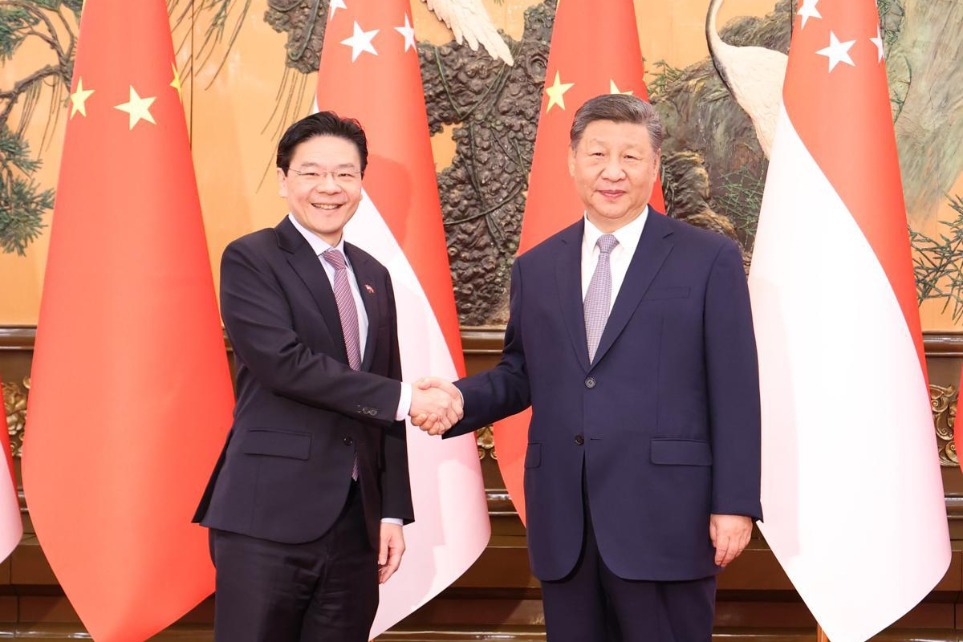Accelerating a green recovery


China's next five-year plan provides the opportunity for the country to ramp up its climate actions
Climate change continues to loom large, with glaciers melting, multiple pest outbreaks, more frequent bouts of extreme weather, severe droughts and flooding. The worsening climate is forcing governments around the world to recognize that responding to the climate crisis and slowing climate change requires immediate and long-term efforts.
In July, the World Meteorological Organization released its latest climate prediction report, in which it noted that the annual mean global temperature is likely to be at least 1 C above pre-industrial levels (1850-1900) in each of the coming five years (2020-24). There is only a decade left to achieve the United Nations Sustainable Development Goals by 2030. One of the most crucial goals is about combating the risk and threat to the planet brought about by climate change. However, the current deteriorating environment poses new challenges to meeting the target of limiting temperature increases to below 1.5 C as agreed on in the Paris Agreement.
But the pandemic has created new dynamics for the climate change issue. Since the outbreak of the pandemic, greenhouse gas emissions have fallen by 5 percent to 10 percent, the greatest drop since World War II. However, with the easing of the level of emergency, governments around the world have begun enacting measures to reboot their economies, which may have serious implications for carbon emissions and air pollution.
In order to achieve the SDGs, China is taking action and has bolstered the green credentials of its 14th Five-Year Plan (2021-25). Businesses, including State-owned enterprises and private companies, pay close attention to the five-year plans and there are calls for a tougher stance and stronger leadership regarding climate issues over the next five years to make a real difference.
To soften the economic blow of the pandemic, the Chinese government has announced an investment package worth 3.6 percent of its GDP, possibly more, to revitalize its economy. These funds, to the tune of well over $500 billion, are destined for investment in infrastructure. Among the seven major types of infrastructure, some will have a direct impact on the green agenda. For example, the construction of electric vehicle infrastructure and more efficient urban public transport systems. In addition to these, other kinds of investment can help to improve efficiency, and will have an indirect effect on advancing the climate agenda, including the development of digital infrastructure and promoting digital technology research, such as 5G, artificial intelligence and data centers.
In China and around the world, government policy and incentives will have a crucial impact on the climate. Consumers and governments face many difficulties, but business leaders have some encouraging ideas. First, businesses hope to continue some of the trends that have emerged during the pandemic, such as combining on-site with remote work, cutting business travel, and reallocating their office space. In such ways businesses can increase the value proposition for their employees, reduce carbon emissions and reduce costs.
New investment strategies during the post-pandemic era will attach more value to environmental protection and sustainable development, particularly investment in new materials for logistics and transportation. This year is the planning year for the 14th Five-Year Plan, which means that not only is there an opportunity to improve the efficiency of measures because of the added imperative of the pandemic, but also the chance to rethink investment portfolios and strategies, so as to add impetus to climate actions.
From a macro perspective, the government must prioritize the roll-out of sustainable stimulus strategies, concentrate on creating green job opportunities, reform business premises for a zero-carbon economy, deploy blended finance for the climate change field, and restart multilateral talks to push for a concerted global response to climate change.
At the enterprise level, priority must be given to strategic planning, to help business executives and investors to start a green recovery after the pandemic.
First, businesses need to accelerate the roll-out of energy efficiency programs, and pro-actively transition to renewables in order to realize energy saving goals. As the impact of the pandemic gradually recedes and businesses restart their operations, they need to speed up efficiency enhancements and move forward with implementing renewable energy programs.
Second, there needs to be an audit of the supply chain. Businesses should enhance their suppliers' greenhouse gas emissions transparency by including emissions in the criteria for consideration before purchases, and seek out methods to reduce their carbon footprint, to encourage suppliers to improve efficiency and attain stringent emissions reduction targets.
At the same time, it is important to improve resilience and respond to the climate crisis. Businesses should reduce their investments' carbon footprint of their own accord, and enhance their resilience as a bulwark against natural, compliance and demand risks triggered by global warming. Businesses should also improve their environmental, social and corporate governance.
Furthermore, a business should consider environmental metrics as part of its risk assessment and investment process and increase the proportion of environmental projects in its investment portfolio mix.
Finally, businesses need to emphasize the importance of climate in their investment allocation and management activities, keep abreast of the latest climate information, and include climate risk in their corporate credit models.
Now is a perfect opportunity to move forward with the development of a green economy. All parties should take proactive steps to ensure they can both reduce their emissions and continue to meet emissions reduction objectives in the next decade.
To this end, governments, businesses and investors must actively promote the green economy, launch scientific innovation and tech cooperation and work together with multiple stakeholders to actively respond to the challenges posed by climate change.
The author is a managing director, a senior partner and chairman of Boston Consulting Group China. The author contributed this article to China Watch, a think tank powered by China Daily. The views do not necessarily reflect those of China Daily.






























